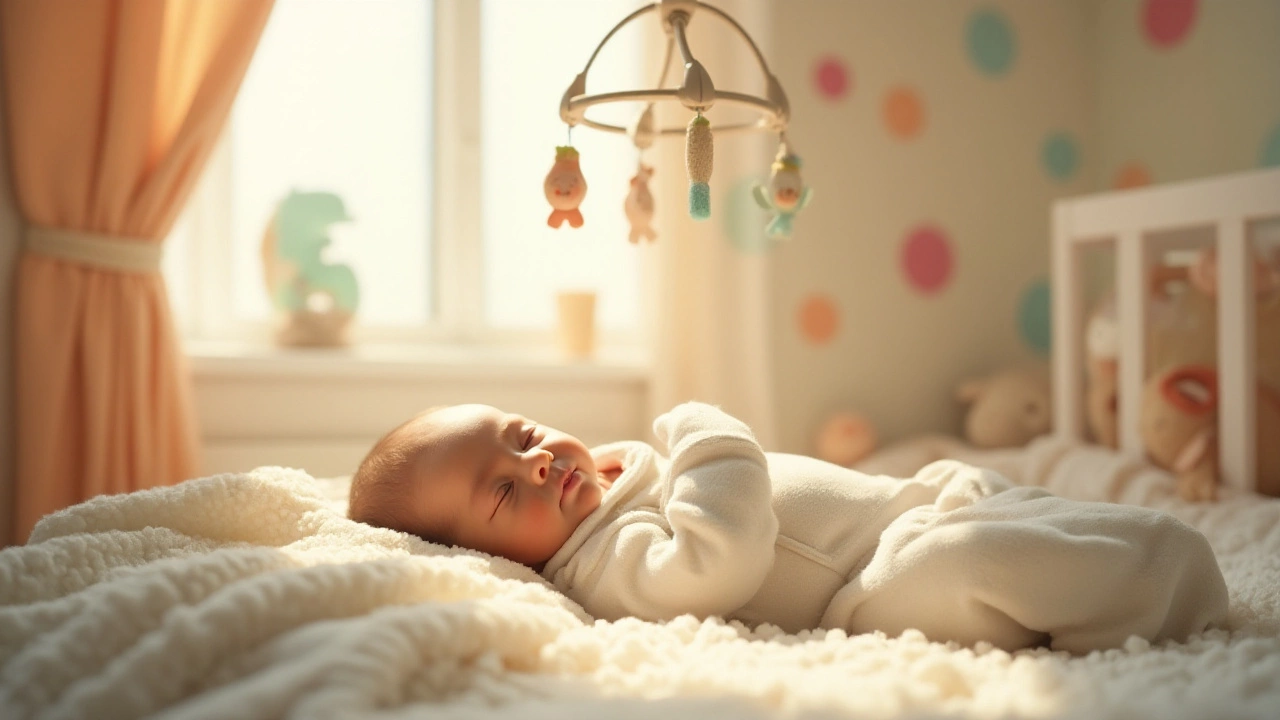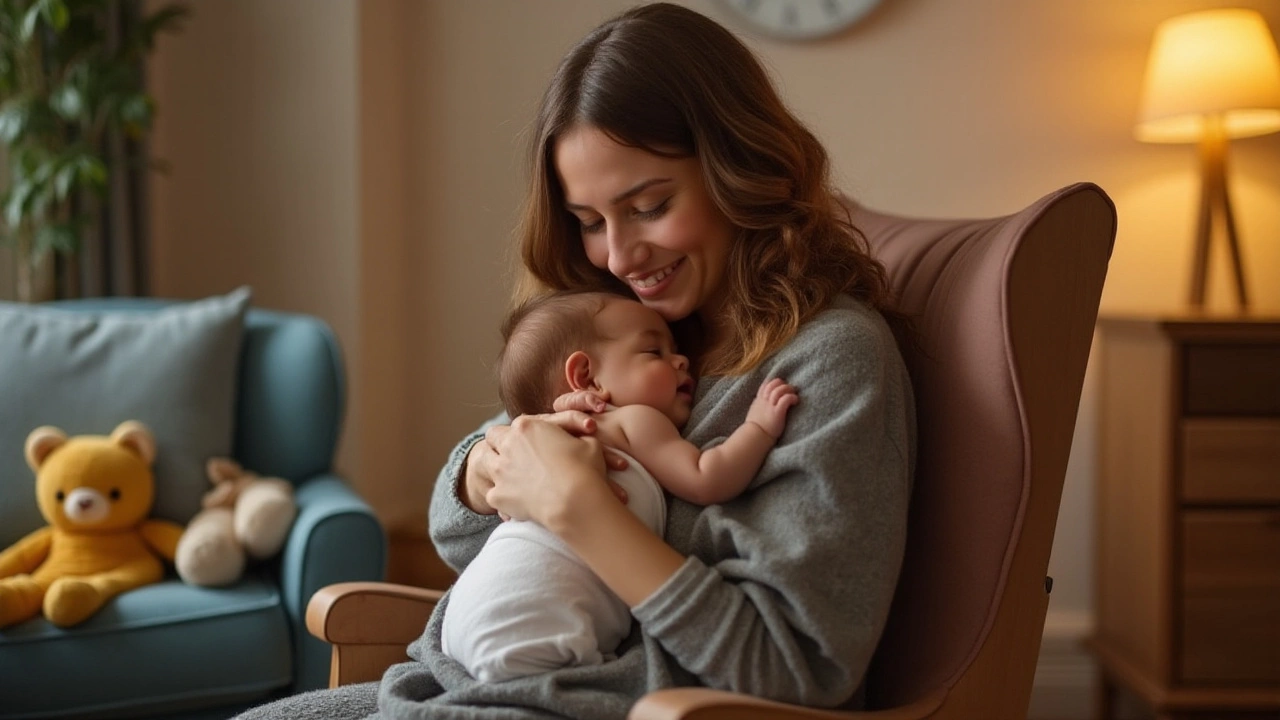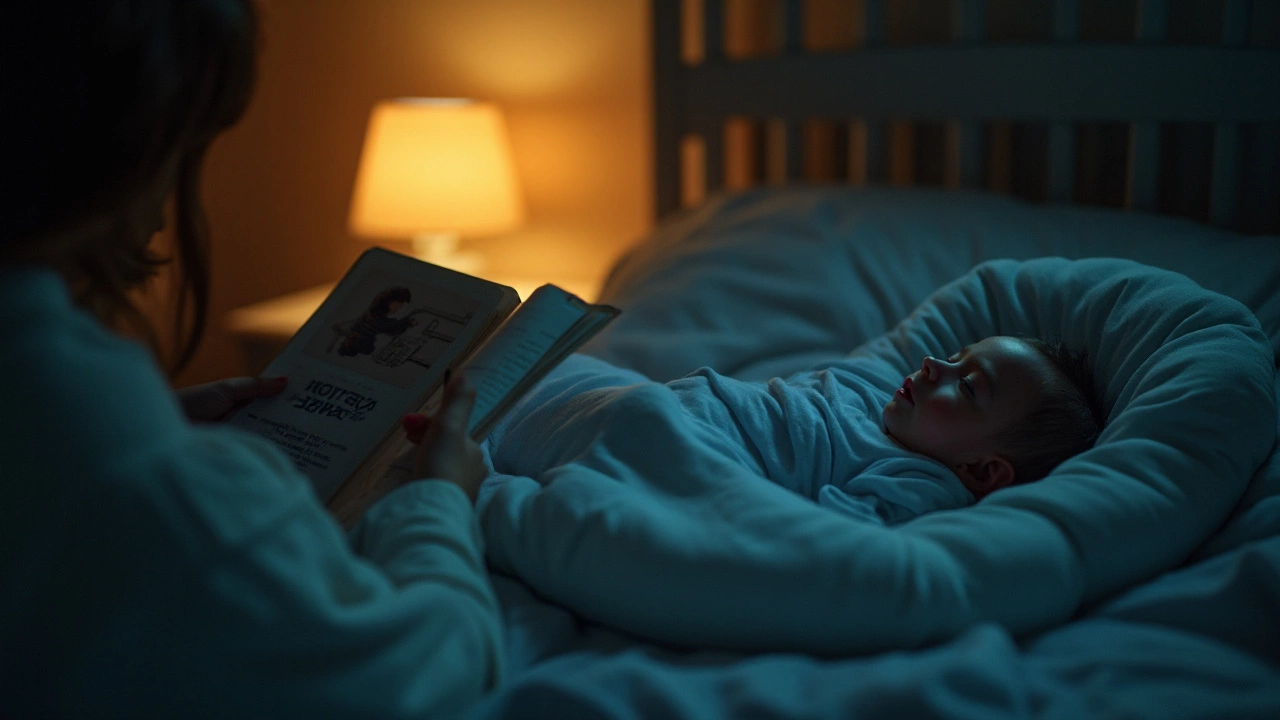Do Newborns Sleep Better Without Swaddling?

Swaddling has been a beloved tradition in many cultures, associated with a snug and secure sleep environment for newborns. But as modern parenting evolves, so do questions around whether it is necessary—or even beneficial—for a newborn's sleep.
Every baby is unique, and what aids one might not be as effective for another. Parents are increasingly curious about the possibilities of letting their newborns sleep without the confines of a swaddle. This article explores the pros and cons of swaddling, considers when unswaddled sleep might be more appropriate, and provides practical tips for parents navigating through these early months. Dive into understanding whether an unswaddled sleep might be right for your little one, ensuring their safety and comfort are kept as top priorities.
- Understanding Swaddling
- Benefits of Swaddling for Sleep
- Potential Drawbacks of Swaddling
- Exploring Unsaddled Sleep
- Tips for Transitioning from Swaddling
Understanding Swaddling
Swaddling, a practice as ancient as parenting itself, involves wrapping newborns snugly in blankets to resemble the safety and tightness of a mother's womb. This widespread custom traces its roots far back into history, from the ancient Greeks and Romans to traditional Native American communities, where its benefits were well recognized and integrated into childcare routines.
The basic principle of swaddling is to provide a sense of security akin to the amniotic environment. This not only helps in reducing the startle reflex—known as the Moro reflex—that can wake up sleeping infants abruptly but can also enhance the duration and quality of a newborn's slumber. Certain studies indicate that swaddled infants seem to sleep more soundly, as the structured support prevents movements that might jolt them awake. However, understanding whether such traditional practices always align with contemporary health guidelines requires a deeper dive.
Historical Perspective and Evolution
Historically, the art of swaddling has seen different adaptations worldwide. In 1650s England, infants were often bound in a more rigid manner than we practice today, which later transitioned into looser, more flexible methods. This evolution reflects growing insights into infant development and the need for babies to have a balance between comfort and freedom of movement. Child-rearing practices adapted over centuries, aided by advances in child psychology and medical research, refine these techniques to prioritize both safety and development.
The American Academy of Pediatrics recommends swaddling up to the age of two months, highlighting its potential benefits in promoting sleep. However, once infants show signs of attempting to roll over, swaddling should be ceased to avoid risks related to suffocation or difficulty breathing.
Modern-Day Swaddling Techniques
Today, the choice of materials and methods has expanded vastly. Soft, breathable fabrics such as cotton and muslin have become popular, minimizing the risk of overheating. The technique is refined to focus on swaddling the arms securely while allowing room for movement of the hips, thus potentially preventing hip dysplasia. Some caregivers opt for modern swaddling solutions, like Velcro or zipper-bound swaddles, which facilitate easier handling and less hassle, especially during the frantic newborn phase. Parents are empowered with various resources, from online tutorials to professional guidance, ensuring they master this beneficial skill while paying heed to any signs of discomfort from their little ones.
Swaddling continues to be a reassuring tool for many parents, offering a semblance of control amidst the unpredictability of newborn care. Yet, it is imperative to recognize the individual preferences and needs of each baby, adjusting techniques as necessary. Whether choosing to embrace or forgo swaddling, informed decisions should always center on the newborn's sleep quality and safety, harmonizing age-old wisdom with modern insight.
Benefits of Swaddling for Sleep
Swaddling has been cherished by parents for generations as a nurturing practice, primarily due to its ability to mimic the womb-like environment that newborns are used to. This tactile reminder of the confined, secure space where they spent their early development can be incredibly reassuring and soothing for newborns, often making it easier for them to drift into deeper phases of sleep. By wrapping a baby snugly in a swaddle, movements—especially the startle reflex—are restricted, helping to prevent unnecessary awakenings. This notorious startle reflex, known as the Moro reflex, is a natural part of a newborn's development but can disrupt sleep cycles, making swaddling an ally for many sleep-deprived parents. When babies are swaddled, the gentle pressure can provide a calming effect, which can lead to less crying and fussiness during sleepy times. This reduction in upset can be profoundly beneficial not only for the baby's rest but also for the parent's peace of mind, allowing for a more restful night for everyone involved.
"Swaddling is an age-old tradition that helps infants feel secure and protected, akin to the warmth of a hug," says Dr. Jane Duncan, a renowned pediatrician.
Moreover, swaddling offers a unique blend of warmth and comfort, vital for newborns who still have to adapt to regulating their body temperature outside the womb. The notion of being wrapped closely can help maintain an optimal body temperature, ensuring neither overheating nor chilling, provided the swaddling material is chosen with care. However, the potential benefits of swaddling extend beyond just physical comfort. There's also a psychological aspect at play here. Around the world, the rhythmic nature of wrapping a baby can seem almost meditative for caregivers, establishing a comforting bedtime routine that signals to the infant that it's time to unwind and prepare for rest. It offers a sense of predictability and understanding of what comes next in their newly structured world, which is crucial for developing brains rapidly absorbing the stimuli from their surroundings. With all these potential benefits, it's little wonder swaddling remains a bedside staple in the toolkit of infant care.

Potential Drawbacks of Swaddling
Swaddling has been a comfort measure for newborns for centuries, wrapping babies in a secure cocoon that mirrors the snugness of the womb. Despite its popularity, swaddling is not without potential downsides that parents should carefully consider. One significant concern is that incorrect or overly tight swaddling can restrict a newborn's hip movement, potentially leading to a condition known as hip dysplasia. It's crucial to allow enough room for the baby’s hips to move freely to prevent any developmental issues. The International Hip Dysplasia Institute recommends a technique known as "hip-healthy swaddling," where the baby's legs are wrapped in a way that allows for some flexing and movement.
Another aspect to think about is thermal regulation. Newborns can overheat if layers of blankets or swaddling cloths are too heavy or if the surrounding room temperature isn't monitored carefully. Overheating is a risk factor linked to sudden infant death syndrome (SIDS), making it essential for parents to be vigilant about maintaining a comfortable sleeping environment. A simple, breathable fabric is recommended to avoid overheating, and the baby's face should always be exposed with no covers over their head.
Impact on Motor Development
Prolonged swaddling can impact a baby's motor development. When swaddled too frequently or for extended periods, an infant might miss out on crucial opportunities to practice motor skills like stretching, kicking, and rolling. These actions are not just forms of play but essential steps in their physical development process. Babies swaddled for sleep might take longer to reach these milestones compared to those who have more opportunity to move freely.The psychological impact also deserves some attention. Swaddling might delay the development of a baby's ability to self-soothe. Since they're less able to use their hands and fingers to explore and comfort themselves during moments of self-arousal from sleep, they might become more dependent on external soothing methods, such as being rocked or nursed back to sleep. This can potentially lead to sleep dependency, where a baby struggles to fall asleep or stay asleep without some form of assistance.
"Swaddling should be done in moderation and with careful attention to avoid any risks associated with its use," suggests Dr. T. Berry Brazelton, a noted American pediatrician and early childhood expert.
Lastly, parents should be aware of the transition out of swaddling. As babies grow, they reach a point where they need to move freely to develop skills such as rolling over. This is usually around two months, when the baby begins to show signs of learning to roll, a key time to start the transition process. Introducing sleep sacks or wearable blankets can be a good middle ground that offers some level of security while also increasing freedom of movement, paving the way for a gradual shift to unswaddled sleep.
Exploring Unsaddled Sleep
Parents often wonder if their newborn can sleep without the traditional swaddle, a practice revered for its comforting embrace. Letting babies snooze unswaddled offers them a freedom that some experts believe can benefit their physical and emotional development. One intriguing aspect of unswaddled sleep is that it allows infants to move freely, possibly aiding in muscle development by using natural reflexes like the Moro reflex. As surprising as it may be, some research suggests that excessive tightening through swaddling might delay a baby’s desire to roll over, hence unswaddled sleep encourages safer movement practices once they begin to explore on their own.
The unswaddled approach aligns with certain natural parenting philosophies, emphasizing allowing babies to regulate their own body temperature and position during sleep. This method reduces the risk of overheating, a concern acknowledged by many pediatricians. Drew Edwards, author of “Mommy Made and Daddy Too!” once remarked,
“Giving your baby the liberty to adjust and find comfort offers them an opportunity to develop sleep self-regulation skills early on.”Though not every infant thrives without the swaddle, many can surprisingly adapt, and it’s often a matter of observing cues and behaviors unique to each child.
It's essential to consider the sleep environment when thinking about unswaddled sleep for your newborn. Maintaining a safe and cozy space could be more critical when the restraint of swaddling is absent. Ensure that the sleep area is clear of loose blankets and soft toys that could interfere with breathing or movement. Keeping the room at a comfortable temperature, not too cold or hot, can also support a good night’s sleep unswaddled.
For those contemplating this transition, it can be helpful to introduce periods of unswaddled time during supervised naps before moving to unswaddled nighttime sleep. Parents might find that their babies respond more positively to unswaddled sleep when given the chance to adjust gradually, reflecting the evolving needs of babies as they grow. Observant parents may notice changes in their baby’s sleep patterns, such as more frequent waking as they explore and interact with their surroundings more actively. A willingness to adapt based on these observations is key.
As more guardians are opting for unswaddled sleep, it brings to light a balance between tradition and innovation, respecting age-old practices while embracing newfound understandings about infant development, a fascinating crossroads at the heart of modern parenting.

Tips for Transitioning from Swaddling
As your baby begins to outgrow the swaddling phase, you might be curious about the best ways to transition them to sleep without the snug wrapping they have grown accustomed to. This change can be crucial as it aligns with developmental milestones, such as the need for simpler movements and rolling over safely. Recognizing signs that your baby is ready for this transition, such as frequently breaking out of their swaddle or starting to roll independently, is essential. Experts recommend beginning the process gradually, perhaps starting with letting one arm out during naps to see how your baby adjusts. This strategy offers a gentle introduction and can foster a sense of security as they become more accustomed to sleeping unswaddled.
One highly suggested tool in this transition is the use of a sleep sack or wearable blanket, which provides warmth and a slight cocooning effect without the tightness of a swaddle. These alternatives allow for more freedom of movement while maintaining a cozy sleeping environment, which can reassure both the baby and the parent. It's an opportunity to let the baby explore their limbs and begin self-soothing techniques, such as thumb sucking or playing with their fingers, which can aid in sleep independence.
Creating a comforting bedtime routine can also ease the transition away from swaddling. A consistent routine involving soothing activities like a bath, gentle massage, or soft singing can signal to your baby that it is time to wind down and prepare for sleep. By establishing these predictable bedtime cues, babies can gain a sense of security and relaxation, aiding in a smoother transition from being swaddled to sleeping freely. This period might require a bit of patience and adaptability, as every baby responds differently to changes in their sleep environment.
It is interesting to note that, according to a study published in Pediatrics, the American Academy of Pediatrics suggests that swaddling becomes unsafe once a baby starts showing signs of rolling over, which typically happens around 2 to 4 months of age. Dr. Rachel Moon, a respected pediatrician, emphasizes that "Ensuring a safe sleep environment is crucial for infants that are transitioning out of swaddling.” This insight ensures that parents remain vigilant about safety while navigating the swaddling transition period.
If you encounter challenging periods during this transition, remember that they are part of your baby’s growth and development process. Encouraging independent sleep skills, such as placing your baby in their crib while drowsy but awake, can promote self-settling behaviors over time. This practice might meet some resistance initially, but with consistent patterns, you will likely notice improvement in their ability to soothe themselves without the need for a swaddle. Observing your baby's individual progress and adapting to their unique needs will guide you through this rewarding yet sometimes challenging phase.